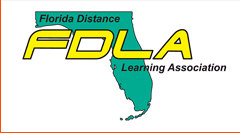UCF PALs: Personalized Adaptive Learning at the University of Central Florida
Start
1-31-2019 1:30 PM
End
1-31-2019 2:45 PM
Short Description
In this session, the presenters will share how the University of Central Florida has conceptualized personalized adaptive learning and is applying it with the Realizeit platform. Participants will engage in a hands-on reorganization activity and will be given Realizeit test accounts to experience personalized adaptive learning from the student perspective.
Abstract
In this session, the presenters will share how the University of Central Florida has conceptualized personalized adaptive learning and is applying it to impact an increasingly diverse population of students with varying skill sets. Through use of an adaptive platform called Realizeit, instructional designers and faculty at UCF have been working together to rethink and redesign courses for personalized learning. Identifying exactly what it is that students need to know and how those pieces of knowledge are connected is key to designing and developing an adaptive course.
When creating a personalized adaptive course in any modality (e.g., face-to-face, blended, fully online), there are distinctions from traditional courses that need to be addressed for the system to work effectively, such as the amount of content, the granularization of the content, and the overall organization. In most traditional, non-adaptive courses, the content is often linear, with little to no branching of topics or student choice. In adaptive courses, the granularization deals with how much the content and assessment is broken down into smaller sections or “chunks,” and where one topic (or subtopic) ends and another begins. Then, these “granularized” chunks of content and formative assessment are organized into learning paths, based on a prerequisite structure.
With adaptive learning maps, students can take personalized paths through the content, visiting areas they want or need to, either as they desire or as the adaptive system deems necessary. This breakdown and organization is important, as a student who may be struggling on a postrequisite may have to revisit the associated prerequisite(s) to improve and achieve mastery. It allows students to see which concepts are connected, and they can also pinpoint exactly where any knowledge gaps may exist.
Session Outcomes:
- Recognize what personalized adaptive learning is
- Analyze student needs and reorganize content for adaptive use
- Discover the student’s perspective in Realizeit
- Identify various adaptive approaches and use cases
- Discuss student perceptions and behaviors in adaptive learning
- Reflect and apply to your course or institution
Format
Concurrent Session
Institutional level targeted
Higher Ed
UCF PALs: Personalized Adaptive Learning at the University of Central Florida
In this session, the presenters will share how the University of Central Florida has conceptualized personalized adaptive learning and is applying it to impact an increasingly diverse population of students with varying skill sets. Through use of an adaptive platform called Realizeit, instructional designers and faculty at UCF have been working together to rethink and redesign courses for personalized learning. Identifying exactly what it is that students need to know and how those pieces of knowledge are connected is key to designing and developing an adaptive course.
When creating a personalized adaptive course in any modality (e.g., face-to-face, blended, fully online), there are distinctions from traditional courses that need to be addressed for the system to work effectively, such as the amount of content, the granularization of the content, and the overall organization. In most traditional, non-adaptive courses, the content is often linear, with little to no branching of topics or student choice. In adaptive courses, the granularization deals with how much the content and assessment is broken down into smaller sections or “chunks,” and where one topic (or subtopic) ends and another begins. Then, these “granularized” chunks of content and formative assessment are organized into learning paths, based on a prerequisite structure.
With adaptive learning maps, students can take personalized paths through the content, visiting areas they want or need to, either as they desire or as the adaptive system deems necessary. This breakdown and organization is important, as a student who may be struggling on a postrequisite may have to revisit the associated prerequisite(s) to improve and achieve mastery. It allows students to see which concepts are connected, and they can also pinpoint exactly where any knowledge gaps may exist.
Session Outcomes:
- Recognize what personalized adaptive learning is
- Analyze student needs and reorganize content for adaptive use
- Discover the student’s perspective in Realizeit
- Identify various adaptive approaches and use cases
- Discuss student perceptions and behaviors in adaptive learning
- Reflect and apply to your course or institution

